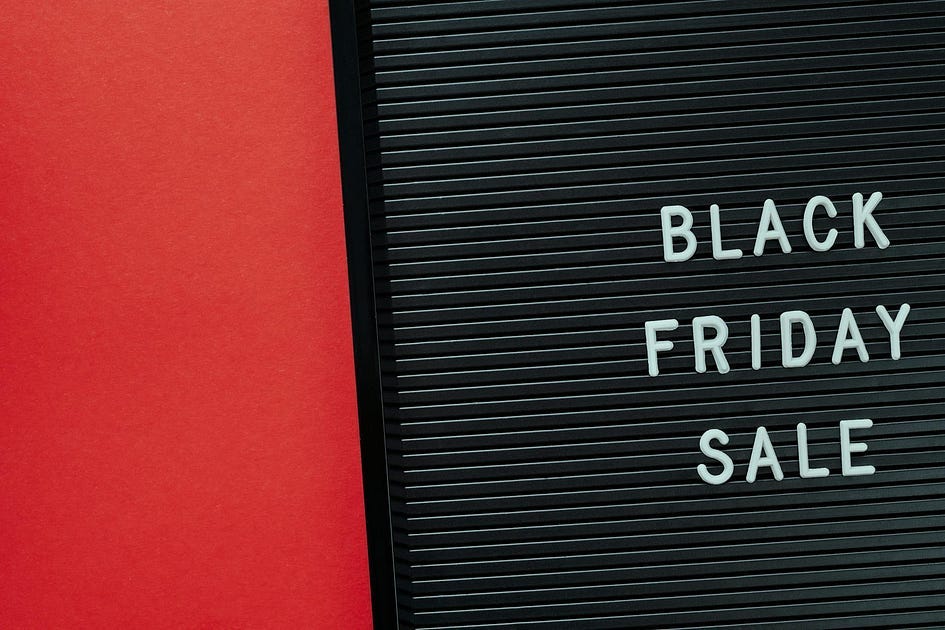Stackable Offers: How to Combine Store Promotions for Bigger Savings [2025 Guide]
What Are Stackable Offers? Understanding the Basics
Stackable offers give shoppers a real shot at deeper discounts by using more than one deal at checkout. Stores know people watch for promotions, but smart shoppers know there’s often a way to use coupons, loyalty rewards, and weekly sales together for the best possible price. These savings can add up fast, online or in-store.
This guide breaks down how stackable offers work, where to find them, and what to watch out for. Whether you’re shopping for groceries, clothes, or electronics, you’ll learn simple ways to combine deals, avoid mistakes, and keep more money in your pocket every time you shop.
What Are Stackable Offers? Understanding the Basics
Photo by Kaboompics.com
Saving money at checkout often feels like a puzzle — stackable offers are the pieces that can turn a good deal into a great one. Stackable offers let shoppers use more than one discount or reward during a single purchase, multiplying the amount saved. Understanding how these offers work (and how stores structure their rules) can help you make smarter choices every time you shop.
What Does “Stackable” Mean?
A stackable offer is any deal, coupon, or promotion you can use at the same time as another. Some promotions are “exclusive,” meaning you can only use one per order. Stackable deals remove those limits, letting shoppers combine multiple ways to save.
Picture it like stacking blocks: each deal adds up, drop by drop, to bigger savings. You might see this in stores that let you use a manufacturer coupon, a store coupon, and even a loyalty discount together.
Types of Stackable Offers
Retailers use a mix of promotions, and knowing which ones stack can make a world of difference. Here’s a closer look at the most common types:
Coupons: Paper or digital, store or manufacturer, coupons are the backbone of stackable deals. For example, major chains and online platforms often allow you to combine their coupons with broader sales.
Sales and Markdowns: Clearance events, percentage-off promotions, and limited-time sales can often be layered with other discounts.
Loyalty Rewards: Rewards points, cash back, or member-exclusive offers from loyalty programs often stack with other deals.
Manufacturer Promotions: These include rebates or direct-from-brand deals that can be used with store discounts.
Special Store Events: Events like “friends and family” sales, student discounts, or teacher appreciation days sometimes stack with standard coupons but check the fine print.
Cash-Back or Rebate Apps: Third-party rebate platforms, like Ibotta or Rakuten, can reward you on top of store discounts.
Some retailers even support multiple coupon stacking during one transaction, especially online. If you want to see creative examples, check out these sales promotion ideas businesses use.
How Stores Structure Stackable Rules
Not all promotions stack automatically — every store sets its own rules. Here’s what usually shapes those policies:
Type of Coupon: Most stores let you stack manufacturer and store coupons, but not two of the same type.
Offer Category: Some sales are “exclusive” and block all other discounts, while others are promoted as “stackable” in ads or emails.
Order of Application: Most retailers take off percentage discounts before dollar-off coupons, maximizing your savings.
Fine Print: Always check the “cannot be combined” clause on coupons or offers to avoid missing out.
Maximum Stacks: Many limit the number of stackable offers — some allow up to three or four, while others limit to just two.
Popular stores like Target, CVS, and Kohl’s have earned a loyal following for their generous approach to stacking discounts. On the flip side, some brands allow stacking only in specific categories or during special events.
Retailers design these rules to balance attracting bargain hunters with maintaining profits. If you want an in-depth look at how retailers weigh benefits and risks, this guide on coupon stacking tactics is a useful resource.
Stackable offers aren’t just limited to coupons and one-off sales. Loyalty programs, online rebate services, and limited-time store offers all play a part. The key is understanding the types and reading the details, so you can combine deals for the biggest savings every time you shop.
Finding and Identifying Stackable Promotions
Unlocking stackable offers takes more than luck or guessing at checkout. The secret? Knowing how to spot a stackable deal, deciphering store rules, and understanding the difference between offers you can stack from your phone versus in person. This section hands you practical tools for recognizing when — and how — you can combine promotions for eye-popping savings during every shopping trip.
Reading the Fine Print: Store Policy Essentials
Retailers tuck the rules for stackable promotions into coupon disclaimers and store policies, so finding those key phrases is step one. Here’s what to watch for:
Stackable Language: Look for terms like “can be combined with,” “may be used with,” or “stackable offer.” These are green lights.
Exclusions and Limits: Phrases such as “cannot be combined with any other offer” or “one per transaction” set hard limits on stacking.
Type of Promotions: Stores often separate manufacturer coupons, store coupons, and loyalty rewards in their rules. You’re more likely to stack one of each rather than two of the same type.
When reading the fine print:
Always check for expiration dates, item exclusions, and limits on how many times you can use the deal.
Some coupons say “not valid with other promotions,” while others add exceptions: “except on sale items” or “excluding clearance.”
Order matters: A store may apply a percentage-off first, then subtract a dollar-off coupon, maximizing your final discount.
Not sure what a store allows? Dig into their website or ask a store associate. A good example is this guide to coupon and merchant discount stacking which breaks down how to understand stacking in practice. You can also find details in store FAQs or their customer service sections.
How to Research Policies Fast
Search the brand’s name plus “coupon policy” before you shop; most major retailers post details online.
On mobile, apps and loyalty platforms will often alert you if a promotion can be combined.
For a real-world breakdown, check out this complete guide to online coupon stacking that reviews policy language and real examples at major retailers.
Online vs. In-Store Stacking: Key Differences
Photo by Max Fischer
It’s not always the same game when you stack discounts online versus at the register. Here’s how the experience splits:
In-Store Stacking
Many stores restrict promotions in person. “One manufacturer coupon plus one store coupon” is the classic in-store combo.
Cashiers may need to manually enter each deal, so knowing the rules can help the process run smoothly.
Regional policies can differ. A store may allow stacking at one location but not another.
Always bring printed policies or screenshots if you’re trying to stack less common combinations.
Online Stacking
Retailer websites often let you enter multiple promo codes at checkout.
Digital offers and auto-applied online coupons allow easier stacking with sales, loyalty rewards or rebate apps.
Stacking can be more generous online, especially during sitewide sales or seasonal events.
Some sites apply “best value only” or limit multiple codes, so test combinations in your cart before you pay.
Tools and Apps That Help
For both shopping styles, apps and deal sites are your friend:
Loyalty program apps and cash-back portals show which promotions stack.
Rebate apps like Ibotta or Rakuten enable stacking with in-store or online purchases for double-dipping on rewards.
Coupon browser extensions auto-apply the best combinations for you.
Curious which apps and cash-back programs are most effective? Head to this resource with reviews of the best rebate and coupon apps in 2025. These tools do the heavy lifting, running through available deals, codes, and rebates before you check out.
Finally, the more familiar you get with each store’s system, the more naturally you’ll spot and combine stackable deals — without second guessing. Happy stacking!
How to Layer Promotions for Maximum Savings
Combining promotions for the biggest discounts feels a little like building a sandwich — the order and ingredients matter. With the right steps, you can use multiple offers without breaking a sweat or the store’s policy. Let’s break down how to layer deals for better savings and walk through real examples, plus mistakes to dodge along the way.
Real-World Examples: Stacking in Action
Photo by Max Fischer
Stacking promotions is more than just clipping a pile of coupons. Top retailers like Target, Kohl’s, and Walgreens make it possible to combine sales, coupons, and loyalty rewards — but every store has its quirks. Let’s look at a few step-by-step scenarios so you can see the process in action.
Target: Stacking In-Store and App Deals
Target lets you blend store sales, manufacturer coupons, Target app offers, and rewards from Target Circle. Here’s a quick breakdown:
Start with a weekly sale price — let’s say $10 off a $50 grocery purchase.
Clip a digital manufacturer coupon for $3 off on the Target app (for a brand like Tide).
Add a store coupon for $2 off $20 (also in the app).
Pay with your Target RedCard for an extra 5 percent off.
Earn Target Circle rewards on the purchase, stacking points for later.
Order matters here. Store applies sales first, then manufacturer, then store coupons, followed by RedCard savings. When you check out, watch the discounts come off, one by one. If you use a rebate app like Ibotta, you can snap a receipt or link your account for even more savings layered on top.
Kohl’s: The Power of Percent-Off Plus Kohl’s Cash
Kohl’s is famous for combining stackable codes:
Shop during a “30% off everything” event.
Use Kohl’s Cash (earned from past purchases), which gets subtracted after percent-off is applied.
Add a $10 off $50 storewide promo code.
Use a rewards program discount, such as Yes2You or Kohl’s Rewards, for more dollars back.
At checkout, Kohl’s applies highest percent-off first, then dollar-off deals, before deducting your Kohl’s Cash. On top, apply cash-back or rebate apps like Rakuten for another rebate. By stacking these steps, it’s not rare to save 50 percent or more at Kohl’s — plus score future rewards.
Walgreens: Prescription for Promo Layering
Walgreens often offers multiple deals you can blend easily:
Use the weekly in-store sale price on health or beauty items.
Clip a digital manufacturer coupon in your Walgreens app for $2 off Crest toothpaste.
Apply a store coupon from the monthly savings book, often found near the entrance.
Redeem Walgreens Balance Rewards points (now called myWalgreens cash rewards) from your account.
For online orders, stack a promo code (like 15 percent off sitewide) on top.
Stacking at Walgreens usually follows this sequence: sale price, manufacturer, store coupon, points redemption, then promo code if online. Using rebate apps or cashback programs can maximize the bottom line.
For more on how merchants design rewards and combo discounts, browse these tiered discount examples to understand how businesses structure stackable deals.
Common Mistakes to Avoid When Stacking
Layering offers isn’t foolproof. Some common missteps can erase your savings or cost you a better deal. Here are some pitfalls and how to keep your stack from toppling over:
Mixing Incompatible Offers
Not every deal gets along. Combining two manufacturer coupons almost never works. Coupons often say “one per purchase,” or “may not be combined with other offers.”
What to do:Always check the fine print.
Only stack one store and one manufacturer coupon per item.
Using Coupons Out of Order
If a store applies coupons in the wrong sequence, you could lose out on extra savings. For example, taking a $10 off coupon after a percent-off discount instead of before. What to do:Review each store’s coupon policy.
Ask at the register for discounts to be applied in the correct order if you’re shopping in-person.
Test different promo code combinations online before final checkout.
Missing a Better Overall Deal
Sometimes, using every coupon isn’t the answer. If a promo says it can’t combine with another but offers a higher discount, you might be better off using it solo. What to do:Calculate both ways — stacked savings versus the single best coupon.
Choose the combination with the higher final discount, even if it’s fewer offers.
Not Meeting Spend Thresholds
Many offers require you to hit a minimum spend (like $50 or $100). If you use too many coupons and dip below the minimum, you could lose out on the discount.
What to do:Always check your cart total after discounts to be sure you still qualify.
Add a small filler item if you’re just under the target spend.
Overusing Coupons and Getting Rejected
Applying too many promo codes on sites that limit them can cause checkout errors or block discounts.
What to do:Stick to store rules, typically 1–2 codes max for most retailers.
Use coupon browser extensions or deal apps to check for conflicts at checkout.
For more ideas on creative savings and promo stacking, these Black Friday promotion tips dive into how stores and shoppers get the most for their dollars.
With practice, you’ll recognize stacking patterns and avoid wallet-draining mistakes. Every little tweak to your process can lead to bigger rewards at checkout — without the headache.
Advanced Stacking Strategies and Pro Tips
When you want to boost your savings further, it pays to use more than the usual coupon and sale. Advanced stacking strategies let you stack additional rewards, rebates, and even cash-back from your credit card or payment app. Tech tools and perfect timing make the process even easier (and the discounts even bigger). Below, you’ll find tactics most seasoned savers use to outsmart store policies and land the lowest possible prices.
Leveraging Technology: Apps and Extensions
Photo by Feyza Tuğba
Smart shoppers know that letting technology do the heavy lifting is a game-changer for stacking promotions. There are dozens of free and paid apps, browser extensions, and deal forums that scout, track, and even stack offers for you. Here are a few of the best tools to keep on your radar:
Automatic Coupon Extensions: Extensions like Capital One Shopping or Honey scan your cart and apply the highest-value stacking deals at checkout. No more tracking countless promo codes.
Price Drop Alerts: Tools such as PriceBlink and CamelCamelCamel alert you when items drop to their lowest price, so you time your purchase for maximum stacking potential.
Personalized Deal Alerts: Many apps can let you set wish lists or preferred brands, then send you an alert when a stackable offer becomes available.
Rebate and Cash-Back Apps: Rakuten, Ibotta, and Fetch Rewards let you double dip by stacking store offers with bonus rebates or cash-back — even on top of in-store stacked deals.
Deal Forums and Community Boards: Sites like Reddit’s r/deals or dedicated coupon forums are treasure troves of real-world stacking success stories and new promo combinations.
For a complete review of some of the best extensions and apps that help automate deal stacking and alert you to hidden savings, see Money-Saving Chrome Extensions to Use When Shopping and this comprehensive list of top coupon sites and mobile apps.
With these tools, stacking deals is less about luck or late-night coupon clipping and more about letting your devices find the right combos for you in real time.
Timing Your Purchases for Extra Savings
Timing isn’t just a money-saving tip — it’s part of the stacking strategy pros live by. Key retail cycles and those can’t-miss promo windows can multiply your discounts. Planning purchases in advance lets you combine the best deals available for stretch-your-budget results.
Here’s when stacking promotions pays off even more:
Holiday Sales: Events like Black Friday, Cyber Monday, Back-to-School, and Memorial Day have unmatched sitewide deals. Most stores drop their stacking restrictions during these windows, letting you pile on coupons, rewards, and rebates.
Clearance and End-of-Season Markdowns: Stack percent-off coupons with clearance prices for serious savings. Sometimes, manufacturer rebates align perfectly with these markdown cycles.
Price-Matching Periods: Many retailers will honor lower prices from competitors. Timing your purchases during these periods means you can price-match, then stack all available store discounts on top.
Bonus Reward Events: Double-points weekends, cash-back bonuses, and member-exclusive sales create ideal stacking conditions, especially if you sync them with other store or manufacturer offers.
Anniversary or App-Exclusive Events: Retailers love surprise deals through their apps or on their anniversary sales. Stack these exclusive deals with third-party rebates and loyalty rewards.
To gain the upper hand, bookmark retailer event calendars and sign up for email alerts so you never miss when stacking windows open up. More tips and a breakdown of how to maximize timing for stacking returns can be found in Maximize Your Savings: Tips for Making the Most of Offers and these clever insider secrets for saving at your favorite stores.
Done right, advanced stacking combines offers, tech tools, and perfect timing to deliver discounts you never thought possible. With each layer — from automated coupon finders to a well-timed Black Friday spree — you’ll see your savings stack up, not just once, but every time you shop.
Conclusion
Stacking offers isn’t just some coupon-clipping trick, it’s a real way to save serious money every time you shop. With the right mix of sales, coupons, rewards, and rebate apps, you can turn ordinary purchases into big wins. Shoppers who layer deals see their totals drop, sometimes faster than they expected.
Give these ideas a try on your next run to the store or online checkout. You’ll be surprised by how quick and satisfying it feels to see the savings add up.
Already scored a big discount using stackable offers? Drop your success story in the comments below. Your tip might help someone else stretch their budget even further. Thanks for reading and happy stacking!




